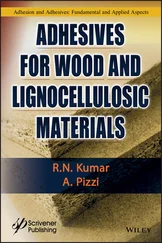The lower T mof type II glass compared with borosilicate glass means that bottles require a lower temperature to be blown and injection‐moulded. Regular soda lime glass (type III) is an untreated version of soda lime glass that is routinely used for foods, with average chemical resistance based around an average chemical composition of 75% silica, 15% sodium oxide (soda), and 10% calcium oxide (lime) but with small additional amounts of aluminium oxide (alumina), magnesium oxide (magnesia), and potassium oxide (potash). Alumina is incorporated to positively influence the chemical durability of the glass and magnesia is used as an agent to lower the overall T mon the addition of alumina ( T m∼ 2070 °C), which serves to reduce the temperature required for moulding operations. Type III glass containers are occasionally used as packaging material for parenteral products or powders for parenteral use but only in instances where stability testing data indicate their suitability. This type of glass is, however, used routinely for food products and as the packaging for non‐aqueous and non‐parenteral pharmaceutical preparations. This type of glass is preferred over type IV material and is used for products that need to be autoclaved as it demonstrates a resistance to the erosion reactions and the increased rate instigated by high‐temperature treatment of the glass container. Type IV glass containers (general purpose soda lime glass) or non‐pharmaceutical and non‐parenteral lower grade general application soda lime glass are used universally as the packaging for foods and beverages, where their low hydrolytic resistance is not an issue. Other than food uses, type IV glass containers have applications in the containment of skin creams and topical products or for oral dosage forms, such as food supplements. With lower grades of glass, delamination of the material in pharmaceutical vials is important, as in other sterile products, and negates its use because it can provide a route for microbe entry into the product by permitting the ingress of air [13].
The standard composition of plain, transparent, ‘everyday use’ or general purpose soda glass is shown in Figure 2.4. This is the glass used for conserve jars, clip‐down Kilner jars, beer and wine bottles, and pâté‐like spread jars all blow‐moulded at pressures of 0.28–0.32 MPa (atmospheric pressure). This type of glass is primarily made of fine ground silica (SiO 2) at about 70%. The glass also contains soda (Na 2O) or sodium sulfate as the next biggest component at about 14%, or a blend of the two. Lime (CaO) is present at about 10% as a modifier. Magnesia (MgO) and alumina (Al 2O 3) are present at approximately 3% and 2%, respectively. Other ingredients such as iron oxides and potash (K 2O) are present at 0.7% and 0.3%, respectively. Glass is an amorphous structure made of a complex entwinement and association in lamellae of a basic monomeric unit, which is the sodium, potassium, and calcium silicate lattice formed at temperatures in excess of 1300 °C (normal glass‐making temperature is 1580 °C). The molecular structure of glass is still somewhat of a complex and not yet fully understood subject, but the basic unit of the component and process variable and large ‘sprawling’ molecule might be (−( x R 2O.SiO 2) n ( y R′O.SiO 2) n ( z R′′ 2O 3.SiO 2) n ‐) n , where R, R′, and R′′ represent monovalent (Na, K, Li), divalent (Ca, Co, Fe, Pb), and trivalent (Al, Fe) ion species, respectively, which may or may not be present. In this molecular formula n is a variable number, and x , y, and z represent stoichiometric ratio values sufficient to combine in exact molar proportions with oxygen (O). The molecules are bonded together on cooling in a ‘loose’ form but with an immense viscosity (customarily 0.8–1.5 × 10 18Pas; with extremes of 10 18–10 21Pas for speciality glasses). Molten glass has a viscosity of 1000 kPas to 0.1 kPas between 800 °C and 1580 °C, respectively, which is somewhere between that of room temperature butter and glycerine syrup. The glass transition temperature ( T g), which is analogous to ‘melting’, of this amorphous solid is typically in the approximately 580–1125 °C range, depending on the type of glass, and it has a viscosity of approximately 10 14Pas at 525 °C, which is below the T g. Any glass can be considered to be a ‘frozen liquid’ in the supercooled state, in which the components do not return to their original form, which prevents extensive ordering and significant crystallinity, and, therefore, means that glasses do not possess a clear T m. Combinations of starch or water‐dispersible colloidal polymers and water also form glassy materials at room temperature (see Sections 3.2and 8.8.1). There are many naturally occurring mineral glasses and all are formed as a result of subterranean igneous processes. In fact, it is thought that the original use of glass stems from the naturally occurring material. Conventional glass‐making uses a combination of virgin ingredients and recycled broken or shredded glass, called cullet, incorporated at approximately 25% w/w on average but this can range from 17% to 93%. This reuse has the advantage of requiring lower process temperatures and, therefore, it has a cheaper and less polluting manufacturing cycle [14]. Making glass is thought to generate between 500% and 600% in carbon dioxide of the weight of silicates and additives used to make the final glass. However, the process is still marginally less polluting than steel or aluminium refining.
1 1 Environmental Protection Agency. (2016). Documentation for Greenhouse Gas Emission and Energy Factors Used in the Waste Reduction Model: Containers, Packaging, and Non‐Durable Good Materials Chapters, 1–82. USA: ICF, for the US Environmental Protection Agency, Office of Resource Conservation and Recovery.
2 2 Toommee, S. and Pratumpong, P. (2018). PEG‐template for surface modification of zeolite: a convenient material to the design of polypropylene based composite for packaging films. Results in Physics 9: 71–77. https://doi.org/10.1016/j.rinp.2018.02.006.
3 3 Garavand, F., Rouhi, M., Razavi, S.H. et al. (2017). Improving the integrity of natural biopolymer films used in food packaging by crosslinking approach: a review. International Journal of Biological Macromolecules 104 (A): 687–707. https://doi.org/10.1016/j.ijbiomac.2017.06.093.
4 4 Liston, E.M., Martinu, L., and Wertheimer, M.R. (1993). Plasma surface modification of polymers for improved adhesion: a critical review. Journal of Adhesion Science and Technology 7 (10): 1091–1127.
5 5 Lazić, V.L., Budinski‐Simendić, J., Gvozdenović, J.J., and Simendić, B. (2010). Barrier properties of coated and laminated polyolefin films for food packaging. Polish Academy of Sciences 117 (5): 855–858.
6 6 Buttler, F.G. and Cowie, G.R. (1965). A Manual of Applied Chemistry for Engineers, 222–230. Edinburgh: Oliver and Boyd Ltd.
7 7 Buttler, F.G. and Cowie, G.R. (1965). A Manual of Applied Chemistry for Engineers, 49–51. Edinburgh: Oliver and Boyd Ltd.
8 8 Masmoudi, F., Bessadok, A., Dammak, M. et al. (2016). Biodegradable packaging materials conception based on starch and polylactic acid (PLA) reinforced with cellulose. Environmental Science and Pollution Research 23 (20): 20904–20914. https://doi.org/10.1007/s11356-016-7276-y.
9 9 Schwarz, H.G. (2018). Technology diffusion in the metal industries; driving forces and barrier in the German aluminium smelting sector. Journal of Cleaner Production 16 (Suppl 1): S37–S49. https://doi.org/10.1016/j.clepro.2007.10.024.
10 10 Leeson, D., Fennell, P., Shah, N. et al. (2017). Techno‐economic analysis and systematic review of carbon capture and storage (CCS) applied to the iron and steel, cement, oil refining and pulp and paper industries. Energy Procedia 14: 6297–6302. https://doi.org/10.1016/j.egypro.2017.03.1766.
Читать дальше











